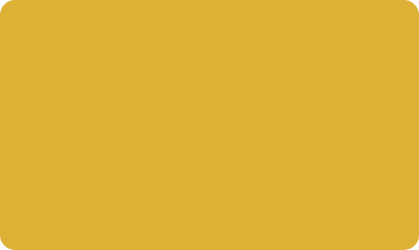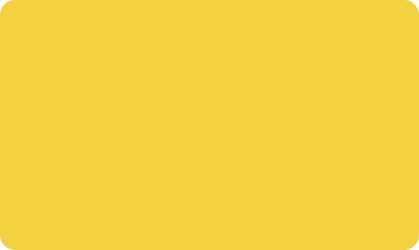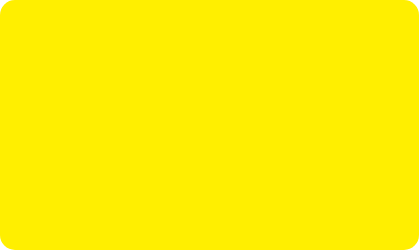Yellow colour is the brightest of all the colours in the spectrum. It is the colour that captures our attention the most.
In nature, yellow is the colour of sunflowers and daffodils, egg yolks and lemons, canaries and bees. In our contemporary man-made world, yellow is the colour of SpongeBob, the Tour de France winner’s jersey, happy faces, post its and signs alerting us to danger or caution.
It is the colour of happiness and optimism, of enlightenment and creativity, of sunshine and spring.
At its core is the dark side of yellow: cowardice, betrayal, selfishness and madness. In addition, yellow is the colour of caution and physical illness (jaundice, malaria and plague). It is perhaps no coincidence that the sources of yellow pigments are toxic metals – cadmium, lead and chromium – and urine.
Design with yellow colour
From web design to interior architecture, we are used to seeing shades of yellow in different dimensions of everyday life.



While there are strong mustard yellows and deep ochre yellows, there are no dark yellows.
Don't miss our ultimate guide on graphic design!
Discover the best online courses, master's degrees, and university programs for a successful career in design with our "Ultimate Guide to Studying Graphic Design: The Best Options for a Successful Career". Shape your future in the creative industry today.View Post Read Later

When you add the black to the yellow you get a “dirty” green
Yellow is the only colour that reacts badly with black: If you add a little black to it, it becomes a sickly greenish-yellow.
Why does the color yellow make people happy?
Yellow is perhaps the most energetic of the warm colors. It is associated with laughter, hope and sunshine. Shades of yellow help energize your designs and will make the viewer feel optimistic and cheerful. However, yellow tends to reflect more light and can irritate some people’s eyes.
The Yellow Colour in Advertising
As the colour of the sun, yellow puts a smile on your face. It is the most visible colour from a distance (which is why it is used for road signs) and communicates cheerfulness, friendliness, happiness and energy. It can also be associated with mental clarity and intellect. However, yellow is also a colour of caution, used for life jackets, police cordon tape and danger zones.
Some shades of yellow can look tacky – although this can fit with your brand image. So yellow is a great example of when to research consumer feedback on the appropriateness of the colour and make sure it’s the right colour for your product.
Depending on the sector you work in, it may be recommended to use yellow for your company or the opposite.
Use yellow sparingly to attract attention or to contrast with another colour.
Using yellow is good for businesses of:
- Home
- Food
- Energy (solar, electric…)
Using the yellow colour is bad for businesses of:
- Finance
- Cars
- Airlines
- Clothing
- Technology
Almost global uses of the color yellow
Yellow is often used as an accent color to draw people’s attention to something important or when it is needed to create excitement. As such, yellow is mostly used in:
- Road maintenance equipment
- School buses and cabs
- Warning signs
- Toys
- Food industry
- Products associated with speed, fun, and low cost
Global meanings for the yellow colour
The global similarities of yellow are significant:
- In almost all cultures, yellow represents sunshine, happiness and warmth.
- Yellow is the colour most often associated with deity in many religions (Hinduism and ancient Egypt)
- Yellow is the colour of traffic lights and signs indicating caution throughout the world.
Unique meanings of yellow in different cultures:
- In Japan, yellow often represents courage.
- In China, adult films are called yellow films.
- In Russia, a colloquial expression for an insane asylum used to be “yellow house”.
- “Marigold” yellow may be associated with death in some areas of Mexico.
- Death row inmates during the Inquisition wore yellow as a sign of treason.
- In the Middle Ages, a yellow patch was used to label Jews. European Jews were forced to wear yellow or yellow “Stars of David” during the time of Nazi persecution.
How the colour yellow affects vision
Yellow colour is the most visible colour in the spectrum.
The human eye processes yellow first. This explains why it is used for caution signs and emergency rescue vehicles.

Peripheral vision is 2.5 times greater for yellow than for red.
Yellow colour has a high light reflectance value and therefore acts as a secondary light source. Excessive use of bright yellow (such as on interior walls) can irritate the eyes.
Myths about the effects of yellow
- Although yellow is distressing when overused, the claim that yellow rooms make babies cry more is a myth.
- That yellow causes diarrhea is a myth,
- People don’t fight in yellow kitchens anymore.
Curiosities
- U.S. law prohibits coloring margarine to make it look like butter.
- Yellow is the only color that reacts poorly with black. The result of mixing these colors is an unattractive yellow-greenish hue.
- Some men perceive yellow as a childish color, so it is not the best color for marketing products aimed at wealthy men. However, this color is also used in marketing dynamic and speed-related products.
- Although there are deep yellows, mustard yellows and ocher yellows, there are no dark yellows.
- We perceive yellow as the brightest color in the spectrum, apart from pure white.
- Peripheral vision is greater for yellow than for red and green.
- Yellow has a high light reflectance value, acting as a secondary light source and helping to create an illuminated “daytime feeling”.
- Yellow is a primary color in the CMYK color model, but in the RGB color model, used for televisions and monitors, yellow is a secondary color obtained by combining red and green.
How does yellow affect studies?
Yellow helps to unclog our thought processes. While yellow helps us be more analytical, it can also help us find solutions through creativity. It does this by helping us create different thought patterns.
If you’re preparing for an exam or a speech, or even working on a paper or article, placing a bright yellow color near you can help promote the positive effects of the color mentioned above.
Don’t use yellow highlighters. Have you ever tried reading text in yellow? Yellow is the most eye-fatiguing color. This is because the brightness of the color means that the amount of reflected light is quite high. Believe it or not, using yellow as a background on paper, computer monitors or anywhere else can cause eyestrain or even vision loss in the most extreme cases. So don’t use it to underline your notes, even if it highlights the important parts it is better to use another color.


